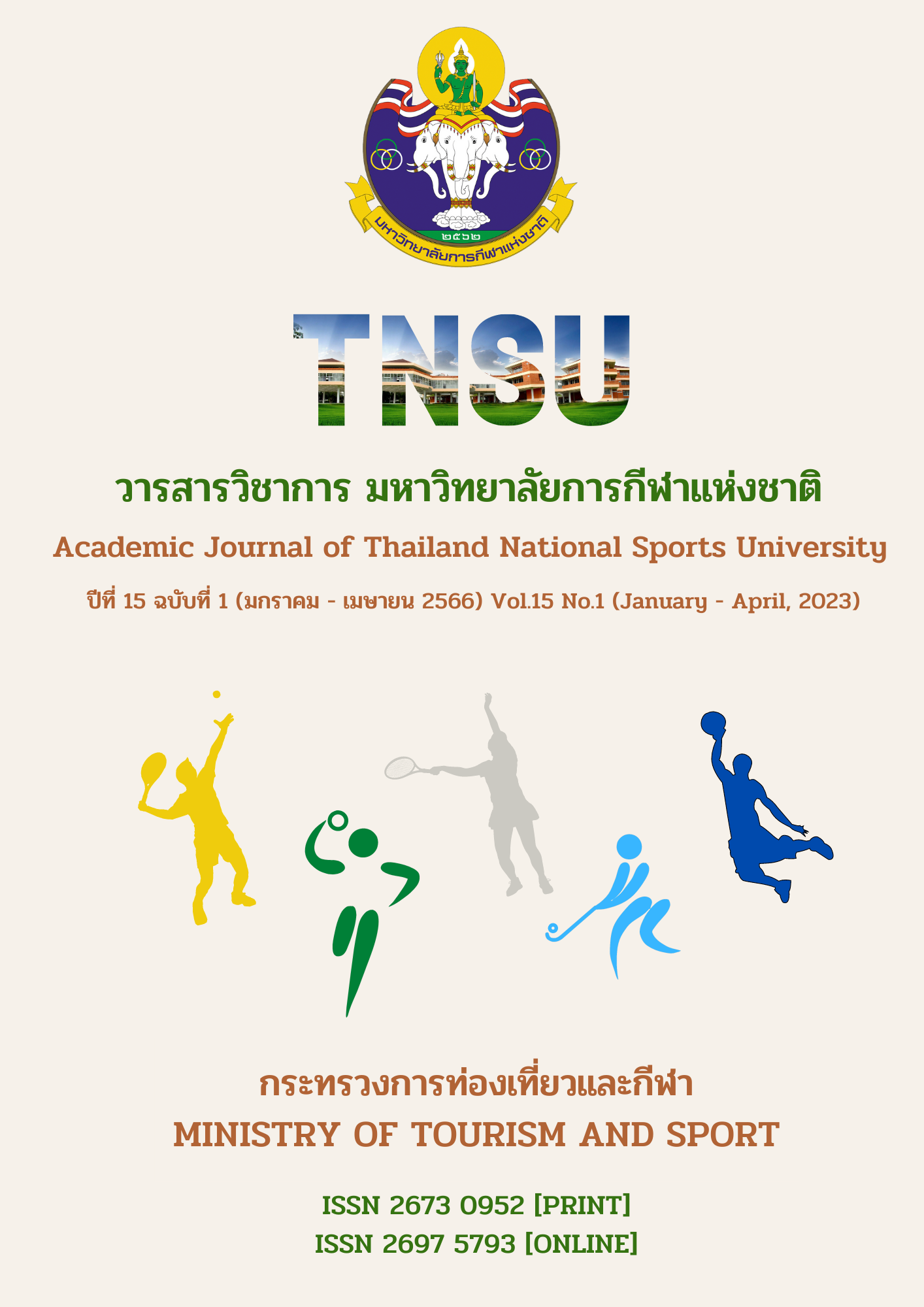EFFECTS OF PHYSICAL ACTIVITY ON BODY MASS INDEX OF GRADE 6 STUDENTS UNDER THE OFFICE OF THE PRIVATE EDUCATION PROMOTION KRABI
Main Article Content
Abstract
The purpose of this research was to study and compare the effect of physical activities on body mass index of grade 6 students underlining the Office of Private Education Promotion of Krabi. The samples of this study were 30 overweight school children around 11 - 12 years of age who were selected using the simple random sampling method. The instruments used in this research consisted of the body weight scale, height scale, body mass index equation and score sheet. The statistics for the data analysis were mean, standard deviation, one - way repeated measures ANOVA and Bonferroni multiple comparison test. The significant level was set at .05.
Based on the analysis of the gathered data, the two findings were: 1) In mean score of Mean BMI of the experimental group during pre - training and after the 4th week of training, there was no difference, but in the average of BMI during training and after 8th weeks of training, there was a statistically significant difference at the .05 level. the BMI after the 8th week training was lower than after the 4th week and before the training respectively. 2) Compared body mass index between experimental groups. and the control group were significantly different at the .05 level. Both after the 4th week of training and after the 8th week, the experimental group had mean of body mass index less than the control group.
Article Details

This work is licensed under a Creative Commons Attribution-NonCommercial-NoDerivatives 4.0 International License.
The published article is a copyright of the Academic Journal of Thailand National Sports University. The passage appeared in each article in this academic journal is a perspective of each author which is not related to the journal. Each author is required to be responsible for all components of his/her own article. If there are any mistakes, each author must be responsible for those mistakes on his/her own.
References
American Alliance for Health, Physical Education, Recreation and Dance. (1999). Physical Education for Life Long Fitness: The Physical Best Teacher’s Guide. Llanos: Human Kinetics.
Boonchom Srisaat. (2017). Preliminary Research (10th ed.). Bangkok: Suwiriyasan.
Disapon Bupphachat. (2019). How important is classroom management in physical education? Journal of Education, Silpakorn University, 17(1), 45 - 54.
Charoen Krabuanrat. (2014). Science of Coaching. Bangkok: Sinthana Copa Center.
WHO expert consultation. (2004). Appropriate body - mass index for Asian populations and its implications for policy and intervention strategies. Lancet, 363l, 157 – 163.
Holfelder, B., & Schott, N. (2014). Relationship of fundamental movement skills and physical activity in children and adolescents: A systematic review. Psychology of Sport and Exercise, 15(4), 382 – 391.
Kanlayanee No-in. (2017). Overweight and obesity among Thai school - aged children and adolescents. Journal of the Royal Thai Army Nurses, 18(7).
Suchada Pichaitum. (2020). Association between family factors and parenting style and nutritional status among students grade 4 - 6 in schools under the office of the basic education commission in Muang District Phitsanulok. Nursing Journal, 47(4).


